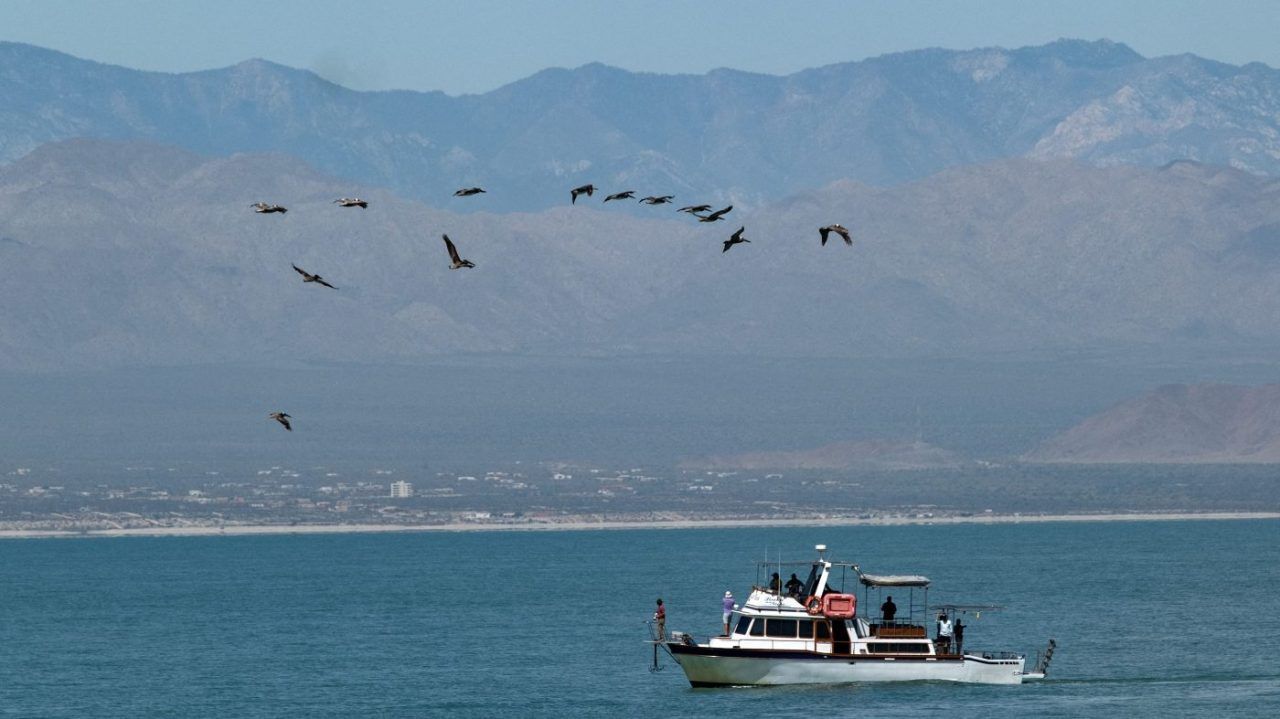Expedition finds resilient population of world’s endangered vaquita porpoise
A new survey found a larger-than-expected population of the world’s most endangered marine mammal, a small porpoise whose collapse has generated international contempt toward Mexico.
Researchers in the Gulf of California recorded between 10 and 13 individual vaquita marina porpoises over 17 days in May, roughly the same number of vaquitas spotted in October of 2021, indicating a more resilient than expected population.
“The survey reveals a remarkable 90 percent reduction of boats and fishing nets within the ‘zero-tolerance area,’ underscoring substantial progress in safeguarding the vaquita marina,” a spokesman for the Mexican embassy in Washington told The Hill.
“This significant progress demonstrates that we are heading in the right direction in our collective efforts to protect the vaquita marina.”
Fears over the extinction of the vaquita have simmered for years with increasing illegal fishing in the Gulf of California – the only habitat for the species. The gulf separates the Baja California peninsula from the Mexican mainland.
Fishermen largely seek out totoaba, a threatened species of fish, whose swim bladder is considered a delicacy in Chinese cuisine, and fetches exorbitant prices.
To fish for totoaba, fishermen use gillnets, which create barriers that entangle and drown vaquitas.
The new survey on the vaquita population, conducted by Sea Shepherd, the U.S. National Oceanic and Atmospheric Administration, the Mexican Navy and ministry of the environment, found that some of the protective measures taken by Mexico and scientists proved effective.
“Last August the Mexican Navy deployed 193 concrete blocks with 3m high hooks designed to entangle gillnets,” reads the report.
“While the exact reason for no gillnet vessels being observed within the [zero tolerance area (ZTA)] is unknown, the simplest explanation would be that the concrete blocks and hooks, in combination with the collaborative efforts by the Mexican Navy and the Sea Shepherd Conservation Society (SSCS) to remove the few fishermen who were willing to risk their nets by deploying them inside the ZTA, is working.”
The dorsal fin of a vaquita porpoise is seen swimming during a census mission run by the Sea Shepherd Conservation Society and Mexican authorities as part of the efforts to save the endangered vaquita porpoise near San Felipe, in the Gulf of California, Baja California State, northwestern Mexico, on May 20, 2023. (Photo by GUILLERMO ARIAS/AFP via Getty Images)
Porpoise population led to sanctions
The decaying vaquita population has been a source of tension in U.S.-Mexico relations, and more broadly damaging to the country’s international reputation.
In March, the Convention on International Trade in Endangered Species of Wild Fauna and Flora (CITES) imposed global sanctions on Mexico for not doing enough to curtail totoaba fishing and protect the vaquita. CITES is a multilateral international body created by treaty that regulates trade in goods sourced from wildlife, and evaluates countries’ individual action plans to protect endangered species.
The sanctions, which limited Mexico’s ability to export wildlife-sourced goods, were lifted in April after a high-level Mexican delegation presented a revised action plan to CITES officials in Geneva.
But the U.S. Department of the Interior found Mexico’s efforts still lacking, triggering the potential for a U.S. embargo on Mexican seafood.
“The Department of the Interior, in consultation with the Department of State, has determined through a thorough investigation of the evidence that, despite international protections and commitments, the government of Mexico has failed to stem the illegal harvest and commercial export of totoaba,” wrote Interior Secretary Deb Haaland in May 26 in letters to Vice President Harris and House Speaker Kevin McCarthy (R-Calif.).
Haaland’s letter stemmed from a U.S. Fish and Wildlife Service finding that Mexico’s efforts were lacking, triggering what’s known as the Pelly amendment, which allows the president to embargo imports from a country found to “diminish the effectiveness” of wildlife treaties.
The Fish and Wildlife Service certification was spurred by a settlement to a lawsuit against Interior brought by environmental groups who wanted to trigger the Pelly amendment.
Per that law, President Biden has until mid-July to decide what actions to take, given the Fish and Wildlife findings, or otherwise must issue an explanation as to why sanctions were not imposed.
Impact on US-Mexico relations
While the United States currently imposes a ban on some Mexican seafood caught using gillnets in the Gulf of California, a broader embargo could estrange bilateral relations.
The two countries have for decades been at odds over Mexican tuna exports, stemming from allegations that Mexican tuna fishing was entangling dolphins.
While that conflict has simmered from its peak in the 1980s, it remains a sore subject in Mexico.
Both a fisheries embargo or findings of continued environmental failings could trigger larger United States Mexico Canada Agreement consequences, risking tit-for-tat retaliations among two neighbors with a complex relationship.
In 2021, the United States briefly banned all Mexican shrimp imports due to a similar concern over sea turtle protections — that ban risked an industry worth more than $200 million per year, according to a 2021 Brookings Institution report.
That report recommended strict enforcement on the Mexican side, but also warned of a vicious cycle if the U.S. market is closed to Mexican fish products and fishermen can’t find economic incentives to comply with regulations.
“Complying with environmental and fishery laws to prevent the bycatch of endangered species and acting against illegal fishing is not just a ‘vaquita-hugging’ agenda of environmentalists. It is essential for restoring Mexico’s most important trade relationship,” reads the report.
Source: The Hill


